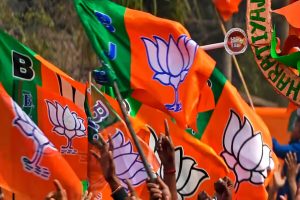Energy is essential for development, and sustainable energy is essential for sustainable development ~ Tim Wirth The vision of modern India encapsulates the concept of ‘smart cities’ to address the phenomenally rapid urbanization of our nation. In 2015, the government of India launched the National Smart Cities Mission to promote an urban renewal and retrofitting program with the mission to develop smart cities across the country, making them citizenfriendly and sustainable.
It has been estimated that by 2050 India’s urban communities are expected to rise to a humongous 50 per cent of the population. Most importantly, about 66 per cent of the world’s population would then be living in urban areas. Urbanization accompanied by infrastructural development, housing, entertainment, commercial and business activities and industrialization have resulted in manifold increase in energy consumption in India.
A recent survey suggests that 13 per cent of the country’s population live sans grid-based electricity. Moreover, supply of electricity in rural areas seems irregular. It is also estimated that by 2050 cities worldwide would consume two-thirds of global energy and contribute up to 80 per cent of global greenhouse gas emission. Therefore, we have a long way to go to ensure basic necessities and quality of life to citizens.
This, indeed, is a wake-up call. At the beginning of the 21st century, about 80 per cent of the world’s energy supply was derived from fossil fuels such as coal, petroleum, and natural gas. But such fuels are finite resources; most estimates suggest that proven reservoirs of oil are large enough to meet global demands at least until the middle of the current century. This apart, combustion of these fuels has a number of negative environmental consequences. Fossil fuel power plants emit air pollutants such as sulfur dioxide, particulate matters, nitrogen oxides, carbon monoxide, and many toxic chemicals. Furthermore, the burning of those fuels releases a large chunk of greenhouse gases, mainly carbon dioxide, that blanket the Earth and trap the sun’s heat. Indeed, fossil fuels are by far the largest contributor to global climate change, accounting for over 75 per cent of global greenhouse emissions and nearly 90 per cent of all CO2 emissions. India’s coal-based power sector accounts for approximately 2.5 per cent of global greenhouse gas (GHG) emissions, one-third of India’s GHG emissions, and around 50 per cent of country’s fuel related emissions.
The science is clear: to avoid the worst impacts of climate change, emissions need to be reduced by almost half by 2030 and reach net-zero by 2050. In 2000, world leaders congregated at the United Nations and unanimously committed themselves to fight poverty and hunger, gender inequality, environmental degradation, and HIV/ AIDS, while improving access to education, health care and clean water, all by 2025.
Although none of the eight MDGs specifically address energy, access to sustainable and clean energy contributes directly to achieving all MDGs. Its importance was acknowledged later, in 2005. SDG 7.1 aims to ensure universal access to affordable, reliable and modern energy services by 2030. However, at the UN High Plenary Meeting held in 2010, a follow–up resolution to the outcome of the Millennium Summit was adopted. In that outcome, several issues relating to energy access, security, clean and renewable energy, etc. were set forth, emphasizing the importance of energy for sustainable development.
It is estimated that India’s population is set to rise to 1.515 billion in 2030 from 1.414 billion in 2022 and, at the current rate of growth, urban population in India is also estimated to reach a staggering 60 crore by 2030. India has become the world’s most populous country and combined with the twin forces of urbanization and industrialization, this underpins rapid growth of energy demand, which rises by more than 3 per cent per year in the Stated Policies Scenario (STEPS) from 2021 to 2030, the International Energy Agency (IEA) mentioned in its report entitled World Energy Outlook 2022.
India is the world’s thirdlargest energy consuming country, thanks to rising incomes and improving standards of living. Indeed, energy use has doubled since 2000, with 80 per cent of demand still met by coal, oil and solid biomass. More elaborately, coal is the country’s top energy source with a share of 46 per cent in 2021, followed by oil (23 per cent) and biomass (21 per cent). Natural gas covers 6 per cent and primary electricity (hydro, nuclear, solar, and wind) merely 4 per cent.
The Indian energy sector has been characterized by low per capita commercial energy consumption, skewed distribution of primary commercial energy sources, high energy intensity, distorted energy pricing and huge levels of environmental pollution. The United Nations Climate Change Conference, more commonly referred to as COP 26, coal took the centrestage of deliberation. India pledged to cut down its total projected carbon emission by one billion tonnes by 2030, and achieve netzero carbon emission by 2070.
The key dimension in India’s climate policy is the role of energy in improving social development. About 80 per cent of the global population lives in countries that are net-importers of fossil fuels. Consequently they are vulnerable to geopolitical shocks and crises. In contrast, renewable energy, also called alternative energy sources are available in all countries, and their potential is yet to be fully harnessed. Such usable energy is derived from replenishable sources such as the Sun (solar energy), wind (wind power), rivers (hydroelectric power), hot springs (geothermal energy), tides (tidal power) and biomass (biofuels). The first and most important benefit of using renewable energy is in its name ~ it is renewable. It means that it will be renewed.
It means that it will not run out. Ever. While fossil fuels will run out in 40-60 years, the Sun will always shine, the wind will always blow, and the Earth will always have geothermal energy. Most renewable energy sources are considered sustainable based on their ability to generate clean, reliable energy for the future. The International Renewable Energy Agency (IRENA) estimates that 90 per cent of the world’s electricity can and should come from renewable energy. In the words of Mark Z. Jacobson:
“A large scale wind, water and solar energy system can reliably supply the world‘s needs, significantly benefiting climate, air quality, water quality, ecology and energy security.” In a country like ours, where there is abundance of sunlight contributing nearly 3,000 hours of sunshine every year, solar energy has the potential to meet a major part of our future energy needs. The National Institute of Solar Energy has assessed India’s solar potential to be about 750 GW assuming 3 per cent of the waste land area to be covered by the Solar PV module.
The government accordingly made an ambitious plan to achieve a target of 100 GW from solar energy by 2022. Its longterm energy target is to reach 500 GW of non-fossil capacity by 2030, with solar power accounting for around 280 GW. Figures detailing the performance of India’s solar sector portray a meteoric rise. A report by a think tank, Ember, released on 22 September 2022, states that 9.8 GW of solar power was installed between January and August 2022, up by 22 per cent on 2021.
Solar share of all new renewable capacity rose from 85 per cent during the same period in 2021 to 89 per cent. While solar energy can be a boon for the Indian energy sector as an alternative source of power generation, there are many challenges that the sector faces: lack of R&D and modern development facilities, lack of land, lack of awareness amongst general public, etc.
(The writer is a retired IAS officer)












